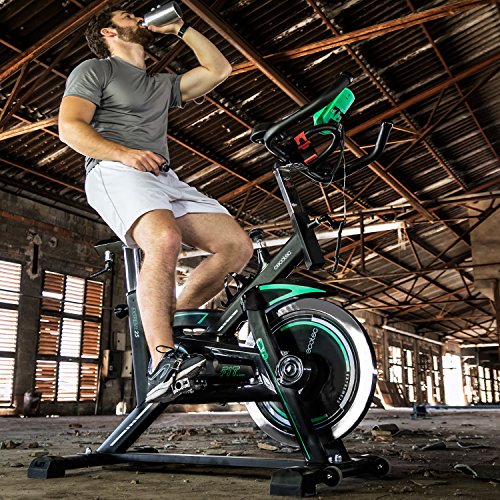
If you’re looking to purchase a spin bike, one important feature to consider is the flywheel weight. The flywheel is the metal wheel at the front of the bike that is responsible for providing resistance as you pedal. The weight of the flywheel can vary from bike to bike, and it can have a significant impact on the feel and effectiveness of your workout. In this article, we’ll explore the differences between flywheel weight on spin bikes and help you choose the right one for your fitness goals.
What is Flywheel Weight?
The flywheel weight is the weight of the metal wheel on the front of the spin bike that is responsible for creating resistance. As you pedal, the flywheel spins, and the resistance is created by the friction between the wheel and the brake pad. The heavier the flywheel, the more force is required to get it spinning, which can provide a more challenging workout.
Flywheel weight is measured in pounds or kilograms, and it can range from as low as 20 pounds to as high as 50 pounds or more. The weight of the flywheel can have a significant impact on the feel of your workout, as well as the overall effectiveness of your exercise routine.
Light Flywheel vs. Heavy Flywheel
The weight of the flywheel can impact your workout in several ways. Let’s take a closer look at the differences between light flywheel and heavy flywheel spin bikes.
Light Flywheel
Spin bikes with a lighter flywheel, typically under 30 pounds, require less force to get them spinning. This can make them feel more responsive and easier to pedal, which is great for beginners or those who prefer a less intense workout. However, lighter flywheels may not provide enough resistance for advanced riders or those looking for a more challenging workout.
Light flywheels are also typically less expensive than heavier ones, which makes them a good option for those on a budget. However, they may not be as durable as heavier flywheels, and they may not provide as smooth of a ride.
Heavy Flywheel
Spin bikes with a heavier flywheel, typically over 40 pounds, require more force to get them spinning. This can provide a more challenging workout and help build strength and endurance. Heavy flywheels also provide a smoother ride, as the weight of the wheel helps to stabilize the bike and reduce vibrations.
Heavy flywheels are typically more expensive than lighter ones, which may not be ideal for those on a budget. However, they are typically more durable and provide a more intense workout, which can be great for advanced riders or those looking to take their fitness to the next level.
Choosing the Right Flywheel Weight
When choosing a spin bike, it’s important to consider your fitness goals and experience level. If you’re a beginner or prefer a less intense workout, a lighter flywheel may be a good option for you. However, if you’re an advanced rider or looking for a more challenging workout, a heavier flywheel may be more appropriate.
It’s also important to consider your budget when choosing a spin bike. Lighter flywheels are typically less expensive than heavier ones, but they may not provide as intense of a workout. Heavier flywheels are typically more expensive, but they provide a smoother ride and a more challenging workout.
Final Thoughts
Flywheel weight is an important consideration when choosing a spin bike. The weight of the flywheel can impact the feel and effectiveness of your workout, so it’s important to choose the right one for your fitness goals and experience level. Lighter flywheels are great for beginners or those who prefer a less intense workout, while heavier flywheels provide a more challenging workout and a smoother ride. Consider your budget and fitness goals when choosing a spin bike, and don’t be afraid to test different models to find the one that’s right for you.

